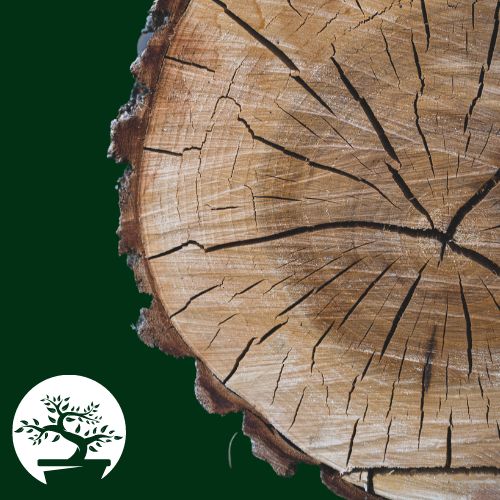Bonsai trees are well known for having extremely long lifespans, but how long can you expect your new plant to live?
Today, we’ll explain the factors that affect the health of a bonsai tree and give you some tips to help your bonsai live as long as possible.
How Long Do Bonsai Trees Live?
Most bonsai trees can live for 50-80 years if cared for correctly. However, many bonsai trees have lived far beyond this range, and some have even topped 1000 years!
It’s important to remember that a bonsai tree doesn’t start its life as a pruned and perfect plant. Instead, they start as a sapling from a fully grown tree. By controlling the plant’s conditions, bonsai growers can stop the sapling from growing into a full-size tree.
This process can last for many years. A bonsai tree typically takes around six years to achieve its elegant final shape. For this reason, most bonsai trees you can buy are already several years old.
Lifespan Of Indoor Bonsai Trees
You might think that putting a bonsai tree out in the elements would shorten its lifespan, but this isn’t always the case. Instead, exposing a bonsai tree to the four regular seasons could dramatically increase its lifespan.
Allowing your bonsai to ebb and flow throughout the seasons will settle the tree into a routine. However, keeping indoor bonsai trees introduces them to constant high temperatures that can confuse the trees’ natural cycles.
You can encourage an indoor bonsai tree to thrive with the proper attention. The key is to ensure that you recreate the natural conditions of the tree’s species as closely as possible – it is, after all, just a miniature tree!
How Can You Tell The Age Of a Bonsai Tree?
The only reliable way to find out the age of a bonsai tree is to cut it down and count the number of rings at the base of the trunk. But, of course, most bonsai owners won’t want to do this. So another method is to prune an old branch from the tree and count the rings there. As with regular trees, each ring in the branch represents one year.
Alternatively, you can multiply the diameter of your bonsai trunk by the growth rate of its species. This is the least accurate approach, but it has the significant advantage of not requiring any damage to your tree.
Factors Affecting Bonsai Tree Lifespan
Many factors affect the lifespan of a bonsai tree. The longest living bonsai trees are kept in perfect conditions for their entire lives, so it’s unrealistic to expect your plant to live for hundreds of years.
That said, following the correct procedures and ensuring your bonsai has everything it needs will give it the best chance of thriving for years to come.
The lifespan of the mother tree
The first factor that influences the lifespan of a bonsai is the lifespan of the mother tree. The mother is the tree that produces the sapling that eventually becomes the bonsai. Therefore, if the mother species lives for a long time, this longevity is transferred to the sapling.
Generally, you can expect a bonsai tree to live 25% as long as its mother species (if it is cared for correctly). This means if the mother tree has a lifespan of 400 years, then the bonsai should be able to reach 100.
Habitat
Although the species of mother tree undoubtedly has a significant impact on a bonsai’s lifespan, the habitat and conditions the bonsai is kept in are even more critical. Ideally, a bonsai tree will be kept in the same habitat as the mother tree.
However, the average bonsai enthusiast will be taking their plant home. In this case, it’s essential to recreate the tree’s natural conditions as closely as possible.
For example, a Ficus tree requires a humid environment to thrive and extend its life. Therefore, adding a basic humidity tray will vastly increase the lifespan of a Ficus tree while improving its short-term leaf health.
Level of bonsai tree care
Bonsai trees are very needy plants that require daily attention and care. Keeping on top of your pruning is the number one way to maintain the health of your bonsai. Pruning keeps the plant’s requirements consistent and stops it from overgrowing.
Luck!
Unfortunately, even the most talented bonsai artists encounter problems they can’t fix. Root rot and other diseases can take hold of a bonsai with little warning and are extremely difficult to overcome.
What Is The World’s Oldest Bonsai Tree?
The oldest known bonsai tree in the world is thought to be the Ficus Bonsai Tree, located at the Crespi Bonsai Museum in Italy. This tree is over 1000 years old, which is certainly impressive!
The Juniper Bonsai Tree at Mansei-en, Japan, is another ancient example of a bonsai. This one isn’t quite as old as the Ficus Bonsai, but it’s had a long life! The common factor that has helped the oldest bonsai trees reach their ripe age is consistent care and love from the gardeners who look after them.
Are Old Bonsai Trees More Valuable?
Yes, the value of a bonsai tree increases dramatically the older it gets. This value reflects the amount of care that has gone into maintaining it. Just imagine how many bonsai growers have lived and died to help their trees reach hundreds of years old.
The price of a bonsai tree isn’t just dependent on its age, though. Aesthetics are a big part of the bonsai culture, so any valuable bonsai will also have an eye-catching and well-pruned appearance.
Are Bonsai Trees Healthy Plants?
Some people assume that bonsai plants are unhealthy, dying restricted trees that aren’t allowed to grow naturally. In reality, as long as you’re giving your bonsai the care it deserves, it can be a completely healthy plant.
